2016 Toyota Mirai Review

FAST FACTS
| Engine: | Electric motor making 153 hp, 247 lb-ft of torque |
| Transmission: | N/A |
| Fuel Economy: | 300 miles to a tank |
| Price: | Costs $58,325 before any incentives and including destination. Lease for $499 a month for 36 months. |
Here’s how the Mirai works in a nutshell: there are two tanks under the rear passenger seats that can be filled with hydrogen gas. The gas is sent through something called a hydrogen fuel cell stack that mixes oxygen with the hydrogen. That creates a reaction that generates electricity to charge a small battery that feeds an electric motor powering the front wheels. The combination of hydrogen and oxygen creates pure water, which is purged periodically. The rate is about 100 cubic centimeters per mile of travel. For perspective, you would need to drive almost five miles to generate enough water to fill a pint glass.
Driving the Mirai
Get the Flash Player to see this player.
Like an electric car, the Mirai offers smooth acceleration and instant torque. Its powertrain makes 153 hp and 247 lb-ft of torque, which is gives the Mirai a feeling of acceleration similar to pure electric cars. However, it tips the scales at over 4,000 lbs., which makes it feel boring but solid to drive. Steering is nicely weighted but like other Toyota models, very little feedback makes it from the road to your hands. Despite the disconnected steering, the Mirai has balanced handling because much of its weight is low and located near the center of the car.
Despite featuring regenerative braking, the Mirai’s braking feel isn’t aggressive like most electric cars. While other battery-powered cars feature braking systems that can bring the car to a stop without you touching the pedal, the Mirai doesn’t feature this disorienting feel.
See Also: Five Things You Need To Know About the 2016 Toyota Mirai
The Mirai is easy to get into and drive. You won’t need to be primed on the science kit under the hood. However, the cabin is overwhelming and tries too hard to push the idea that this is a futuristic vehicle. There are a too many screens, charts, graphs and buttons on the dashboard.
On the top center portion of the dash you’re presented with the speedometer, gear indicator and information about the Mirai’s powertrain. Below that is the navigation and infotainment screen, which is part of the standard equipment list. Look further down and the car’s unique gear selection lever sits beside the touch screen operated climate controls that are frankly more distracting than useful. Finally, low down on the center console, you’ll find other controls like heated seats and steering wheel. While it comes down to personal preference, I’m just not a fan of the dashboard layout. There’s too much to take in, too many buttons and too many screens. Often the future is demonstrated with a simplistic, minimalist design and the Mirai just doesn’t exhibit this trait.
In spite of its questionable interior design, the car is well appointed with soft touch materials and comfortable leatherette seats. There are also other high-tech standard features including blind spot monitoring and lane departure warning in addition to lane-collision warning and adaptive cruise control.
Paired to that puzzling interior is a unique exterior design. It combines the familiar teardrop shape of a Prius with a sharper, edgy design. Whether it’s pretty or not, the car stands out and commands attention.
The Big Picture
We’re used to the smell, sound and feeling of an internal combustion engine as it systematically transforms tiny explosions into directional movement. Electric cars are much newer to the market, but there’s a simplicity to them that’s as relatable as a remote-controlled toy car.
But internal combustion cars and electric cars have drawbacks: EVs have limited range and long recharge times, while internal combustion vehicles create polluting tailpipe emissions.
Hydrogen cars like the Mirai combine the benefits of both electric and gasoline powered cars and eliminates certain drawbacks of those current-generation products. It’s more environmentally friendly than gas powered cars and like an electric car it doesn’t pollute the air while driving. With a range of 300 miles, the Mirai isn’t as limited as even some of the most advanced electric cars. Unlike EVs, hydrogen cars can be refuelled in about five minutes at a pump much like a gas- or diesel-powered vehicle as long as you can find a pump.
The Fuelling Problem
Right now, California has 13 research hydrogen fuelling stations, nine public stations and an additional 18 that have been funded and are expected to be operational in the next few years. Toyota is helping to finance these operations, but it’s still a tiny percentage compared to the number of gas stations available in the state. Sure, there’s potential: the state of California also requires 33 percent of all hydrogen to be produced via renewable resources. But most companies are meeting this percentage by getting methane from a landfill or wastewater treatment plant and feeding it into a centralized steam methane-reforming facility. This methane is blended with natural gas, which is also methane, but a fossil fuel. What this all means is that we’re not yet ready for the real, sustainable future and may not get there without heavy government subsidization.
But the Mirai is exactly what the average consumer would want. It has solid on-the road performance, good range, quick refills and a unique look. It’s also fairly affordable coming in at $58,325 before any incentives and including destination. In California, that will drop to $45,325 after rebates.
Leasing is also an option at $499 per month for 36 months with $3,649 down at signing. Lease customers may be eligible for a $5,000 state rebate. Toyota will also cover the cost of hydrogen fuel for the first three years of ownership, although that’s partially because hydrogen fuelling isn’t simple. There isn’t yet an accurate way to measure and charge for it. While the car isn’t outlandishly expensive, it’s the fuel infrastructure that will be the most limiting factor for now.
The Verdict:
The term “hybrid” is practically synonymous with the Toyota Prius. That’s a big win for Toyota and a success that could be repeated with the Mirai as the face of hydrogen cars. While many of us aren’t going to be able to buy or live with a hydrogen car at the moment, the Mirai proves that Toyota has the right idea, but only if the rest of the world is ready.
LOVE IT
- Zero-emissions
- Smooth acceleration
- Comfy interior
- Refined driving feel
LEAVE IT
- Heavy
- Fuelling infrastructure
- Ugly

Sami has an unquenchable thirst for car knowledge and has been at AutoGuide for the past six years. He has a degree in journalism and media studies from the University of Guelph-Humber in Toronto and has won multiple journalism awards from the Automotive Journalist Association of Canada. Sami is also on the jury for the World Car Awards.
More by Sami Haj-Assaad



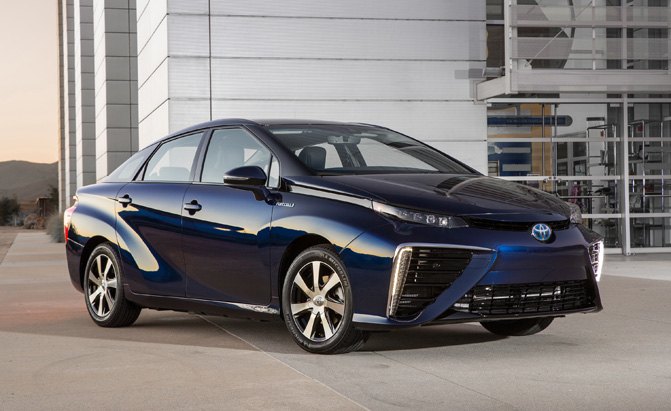

















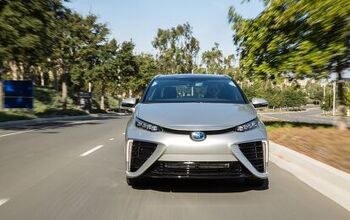
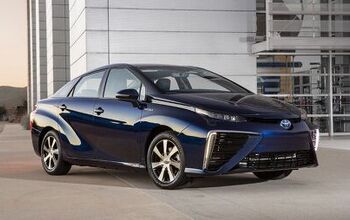
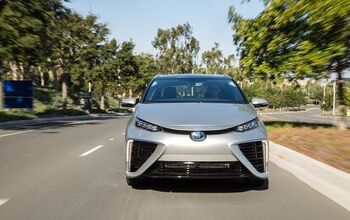


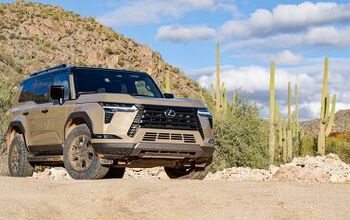
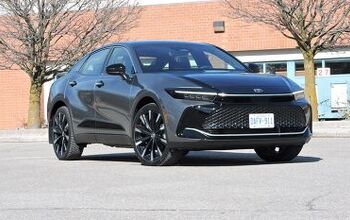
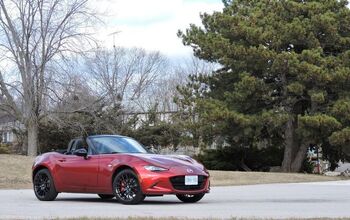

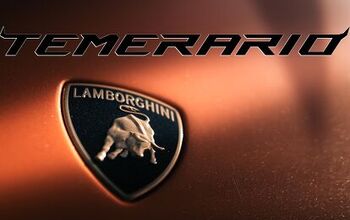
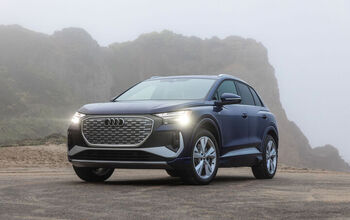

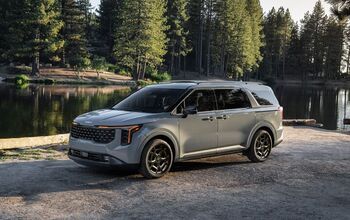

Comments
Join the conversation
Not sure this is not common knowledge, but I do not know the answers. Does it over heat like a gas engine? Does it have a transmission, or gears? Does the fuel stack hold up like a modern gas engine? What is the replacement cost?
If this car relies mostly on a rechargeable battery, then be prepared for the same problems and costs as you've had with hybridcars .